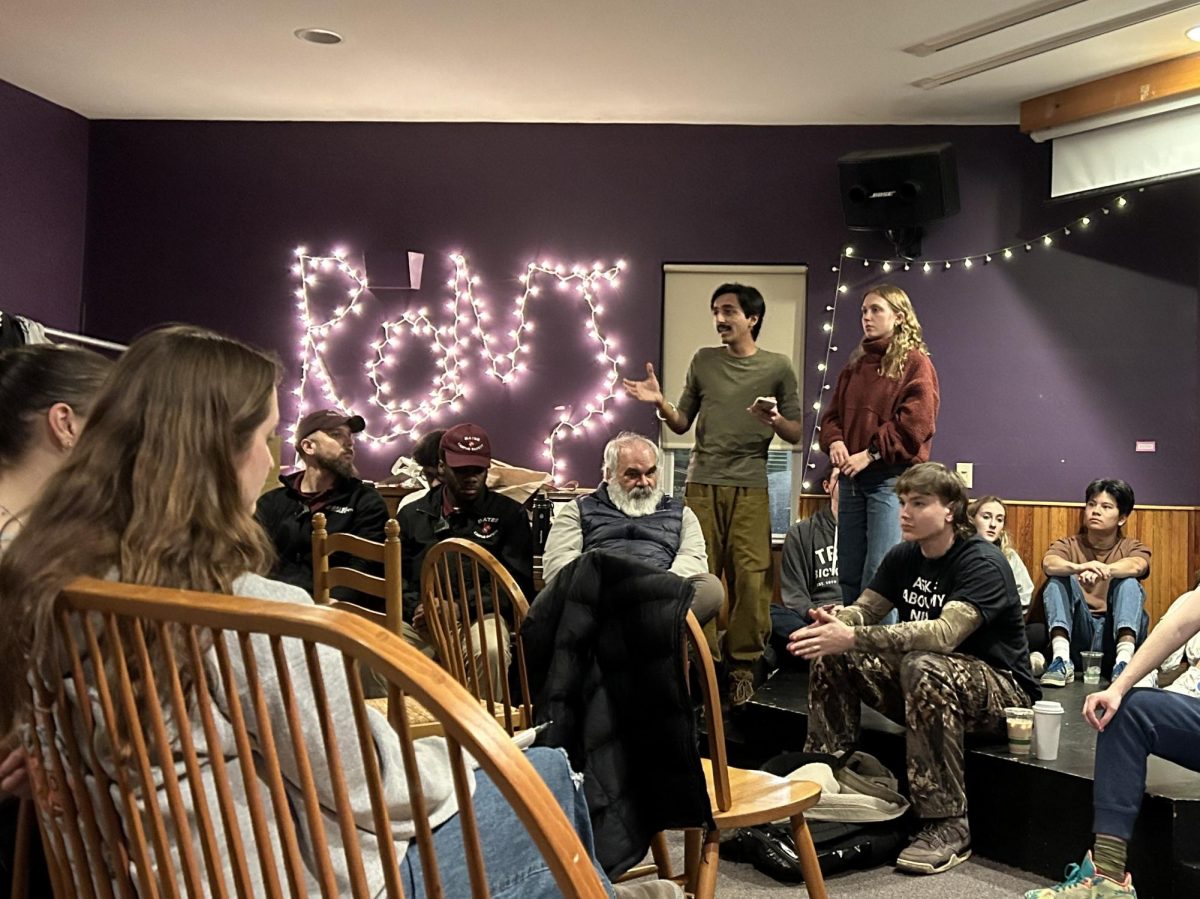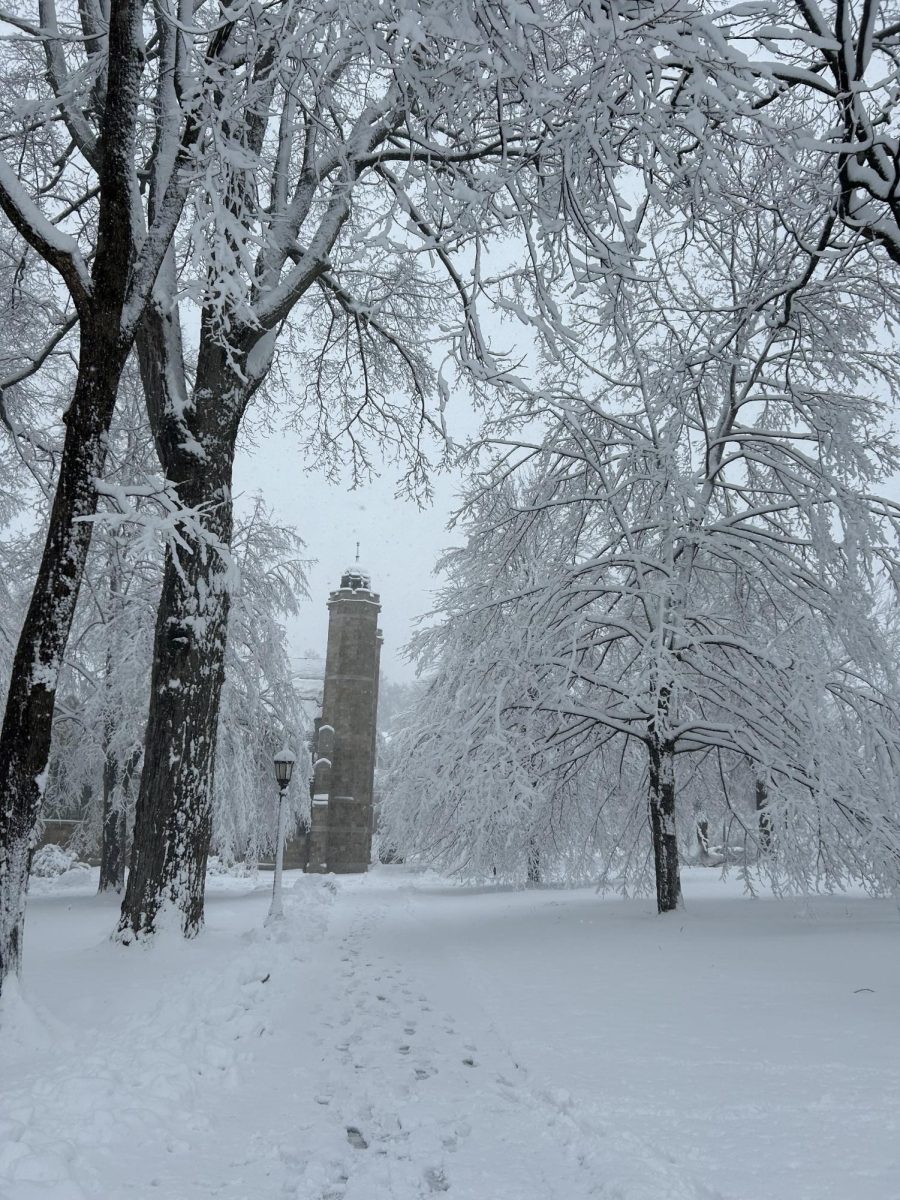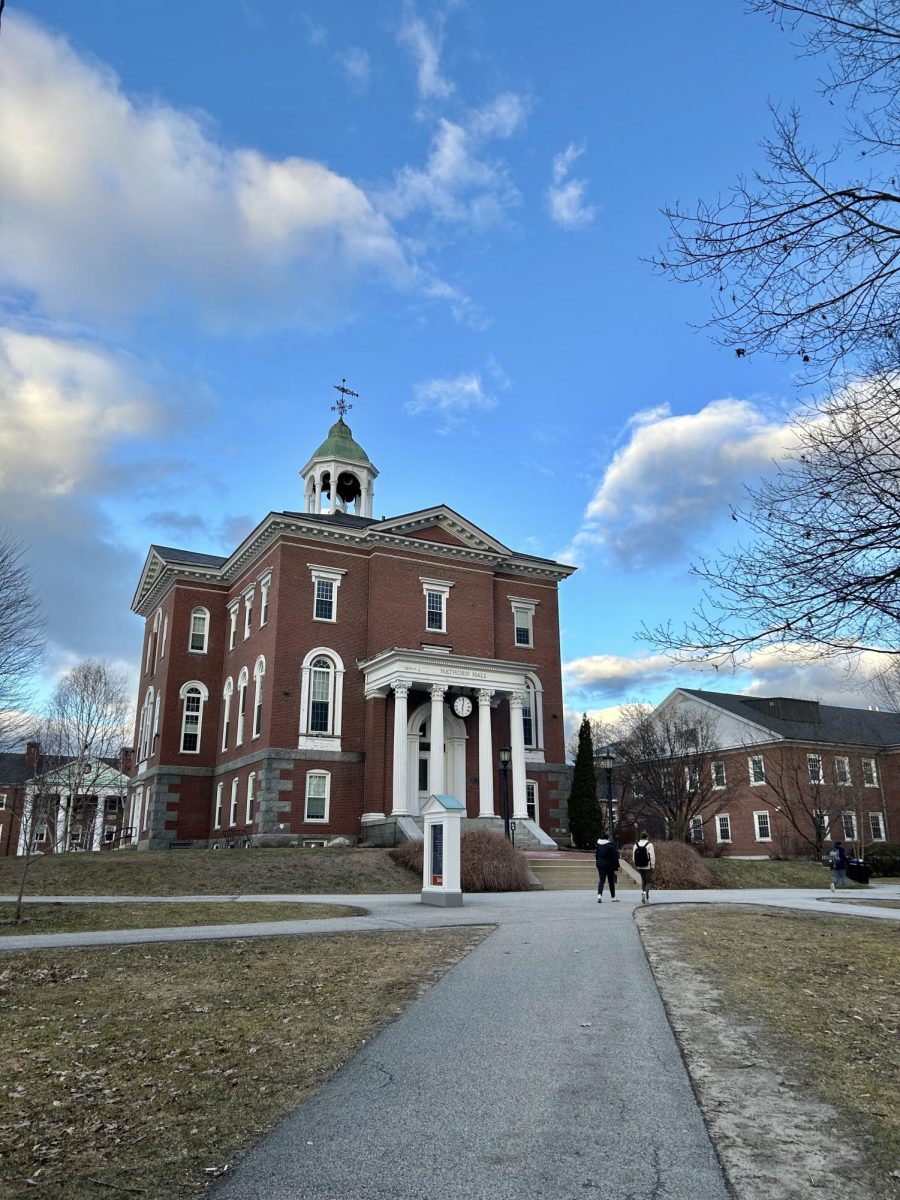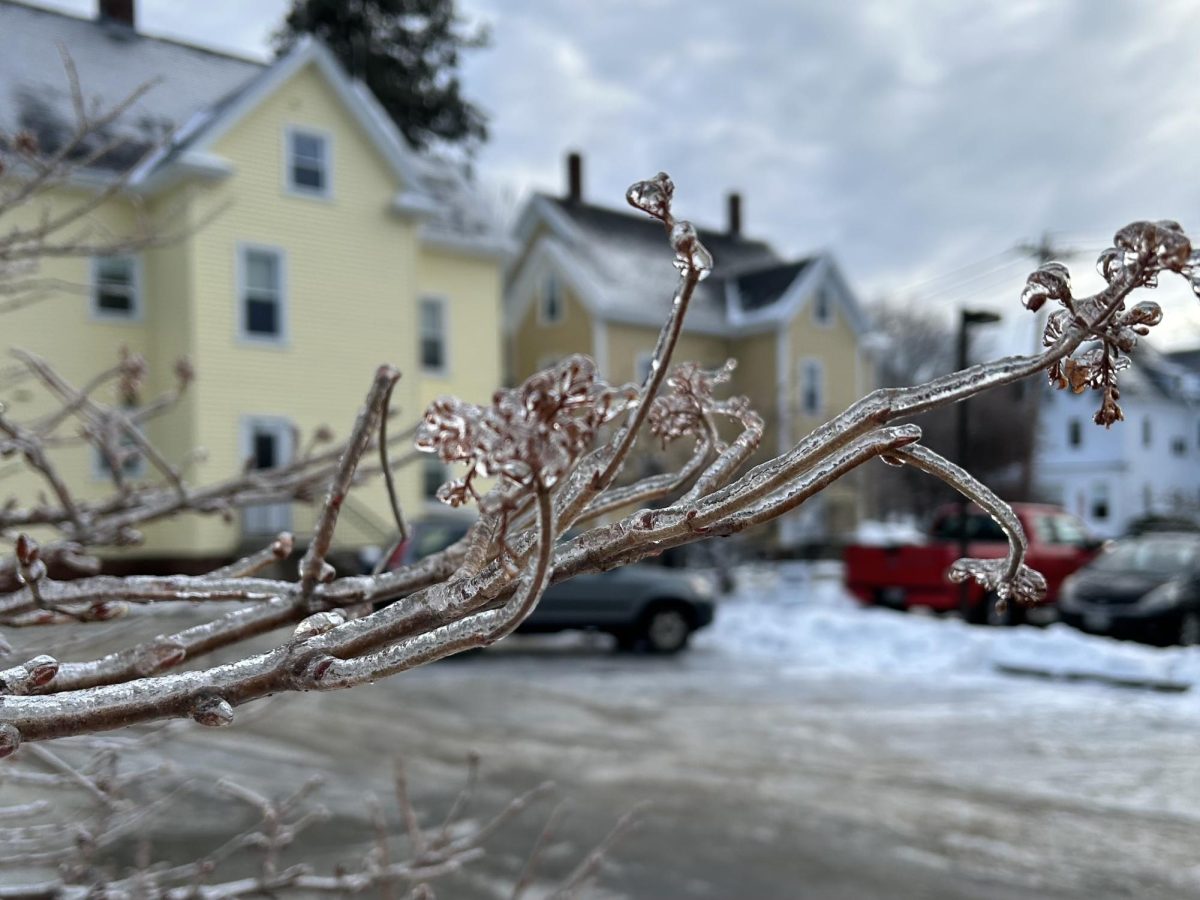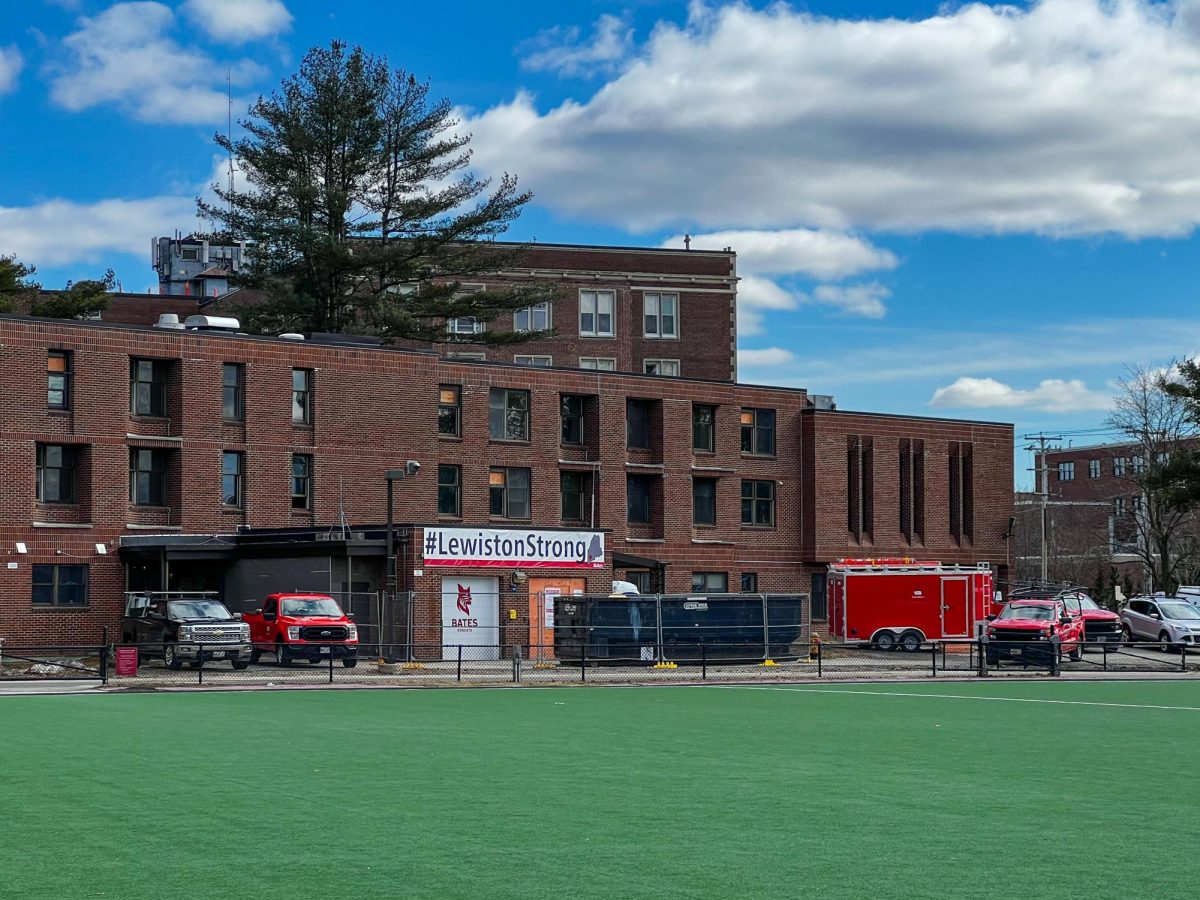As part of Sustainable Earth Week at Bates the EcoReps in conjunction with the Eco Justice house organized a tour of the elusive greenhouse on the top floor of Carnegie. Once you arrive at the top floor, you need to climb an additional flight of stairs to arrive at a white, steel door– the only thing that separates you from the fabled greenhouse of Bates legend. The greenhouse is looked after by Mary Hughes, the plant coordinator for Bates College.
Upon opening the door, students on the tour stood in awe of the general “green” exuding from the door’s entrance. “As you can see, we have a beautiful view. It’s very nice and quiet up here, especially in the winter time,” commented Hughes as students looked out the windows to see the skyline made of roofs and trees. Fashioned like a botanical garden, the greenhouse is filled to the brim with cacti, succulents, and other exotic “humidity-loving” plants.
Hughes began the tour by pointing out Professor Andrew Mountcastle’s beehive in the corner of the room. “Over in this corner we have Andrew Mountcastle, he does flight projection and he’s working with wasps and bees, so that’s his little contraption over there” she said, pointing to a door that warned “Do Not Open… Seriously.” Although Mountcastle’s experiment is self-contained, the greenhouse is often visited by outside life, such as bees, wasps, ants, and other critters such as aphids. To this, Hughes shrugged, “It’s just how it is.” She went on to say, “We do only treat organically, that’s basically with dish soap and organic soap, we do get aphids and we get the mealy bugs—it’s just part of life in organics.”
“It’s hard to believe that this is kind of like a lab,” stated Hughes midway through the tour, “but one of the things we do is plant diversity, and the students will come here and pick a plant to study it and learn to the identification and all that. A lot of different types of plants are here, these are more of our humidity loving plants which are in the back here…”
She next went over to point out one of her personal favorite plants. “This hoya plant was given to me and I wish it was in bloom because it’s just amazing. It’s the most bizarre flower that I’ve seen. It’s a vine plant, and it just grows and grows, but it’s purple and it’s just very unique…” Often throughout the tour, a certain flower or plant would catch Hughes’ eyes, such as the orange clusia (“It’s just—It’s just gorgeous…But, you know, I’m partial”).
After the official tour, Hughes was excited to field any and all questions thrown at her by those on the tour. One student asked why there were dark spots on a fern. Without missing a beat, Hughes replied, “They’re not bugs, they’re spores. So in the wild, or in the forest, they’ll get old and then they got hard and fall off, and they’ll either propagate on the ground or the wind will take them, that’s why you find ferns everywhere!” she laughed. “And we’ll find ferns in all these different pots,” she gestures around the greenhouse “You know, it just transports so easily.”
“We have banana trees, and we have a pitcher plant! Are you familiar with carnivorous plants? Pitcher plants are carnivorous…This is one of my worker’s, and it was looking a lot better than this,” she laughed a bit nervously, “It’s very, very sensitive, it has to have purified water, and our water appears acidic, as you know if you drink the tap water…So we’re trying to get this back to looking good.” She went on to describe where these pitcher plants can be found, in places like rainforests and South Carolina, but also, according to Hughes, “You will find it in the woods in Maine in the bogs, because it stays warmer with the peat moss [decomposing] and all that.”
Before too long, the tour was over and the students filed out the door after taking a satisfactory amount of photo-ops with the plants. As students descended the steps back to Carnegie, Hughes joked, “Now you have to be biology majors!”




